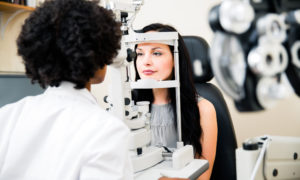Nov. 4, 2020

Responding to the rapid rise of telehealth-based care among U.S. optometrists, many of whom began using the technology to remain connected with patients during the coronavirus pandemic, the American Optometric Association (AOA) is shifting its stance toward virtual vision care, according to reporting by Vision Monday.
A couple weeks ago, the AOA’s board of trustees approved a new telehealth position statement that reflects the recommendations of the organization’s Telehealth Council. The new position statement replaces the board’s 2017 policy statement. Asked how the AOA’s stance on telehealth has evolved over the past three years, AOA president William T. Reynolds, OD, told VMAIL, “The just-released 2020 update—which was developed over the last year in close consultation with leading companies and a wide-range of policy experts all convened by the AOA—factors in developments in artificial intelligence and other areas of rapid innovation as well as the lessons learned from the emergency telehealth expansion during the COVID-19 pandemic.
Special Report
“The result is a more in-depth, forward-facing and activist approach focused squarely on the opportunities connected to telemedicine in optometry, the use of telemedicine to establish a doctor-patient relationship for an initial diagnosis and documenting that in-person care, provided by a doctor of optometry, is the gold standard for the delivery of a comprehensive eye exam and for the prescription of glasses or contact lenses.”
The new AOA guidelines define “telemedicine” as referring specifically to “remote clinical services,” while telehealth can refer to “remote non-clinical services, such as clinician training, administrative meetings, and continuing medical education, in addition to clinical services.”
Regarding online vision testing, which AOA refers to as “direct-to-patient eye and vision-related applications,” the new guidelines state that these applications “do not constitute telemedicine in optometry unless used under the direction of a doctor of optometry.”
Explore New E-Resource
However, AOA stipulates that direct-to-patient eye and vision-related applications can be used provided the supervising doctor of optometry has either an existing doctor-patient relationship or be part of an integrated health delivery system where the patient already receives care in which the consulting doctor of optometry has access to the patient’s existing medical record and can coordinate follow-up care. But AOA maintains that these applications “cannot replace or replicate a comprehensive eye exam provided by a doctor of optometry.”
Other Articles to Explore
AOA allows that direct-to-patient eye and vision-related applications “may provide data related to elements of a comprehensive eye exam but do not constitute patient care and fragmentation of a comprehensive eye exam into components delivered independently is “deleterious and deceptive to patients.”
Regarding online prescription renewal, AOA states that a prescription for glasses or contact lenses can only be derived through the completion of a comprehensive eye examination. “The eye and patient health portion of a comprehensive eye examination or the refractive portion of a comprehensive eye exam, based on current technologies and uses, cannot be replaced or replicated by direct-to-patient eye and vision-related applications,” according to the new AOA guidelines.

























